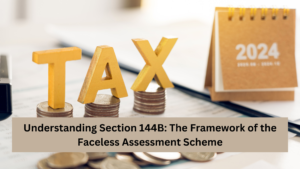
The Central Goods and Services Tax (CGST) Act, 2017, is a cornerstone of India’s comprehensive tax reform aimed at unifying and simplifying the tax structure across the nation. Among its various provisions, Section 50 plays a crucial role in ensuring compliance and timely payment of tax dues by taxpayers. This section deals with the interest levied on delayed payments of tax, a mechanism designed to incentivize punctuality and maintain the smooth functioning of the tax system.
The Core of Section 50

Section 50 of the CGST Act outlines the interest liability of taxpayers in cases where they fail to pay their tax dues on time. The essence of this section is to impose an interest penalty on delayed payments to encourage timely compliance. The interest is calculated on the amount of tax not paid or paid late, thereby ensuring that the government’s revenue collection is not adversely affected by delays.
Key Provisions of Section 50
- Interest on Delayed Payment:
- The primary provision under Section 50 is the levy of interest on delayed payment of tax. If a taxpayer fails to pay the tax due within the prescribed period, they are liable to pay interest on the outstanding amount. The rate of interest is typically 18% per annum.
- The interest is calculated from the day succeeding the due date of payment until the date the tax is actually paid.
- Interest on Excess Input Tax Credit (ITC) Claimed or Excess Reduction in Output Tax Liability:
- Section 50 also covers scenarios where a taxpayer claims excess Input Tax Credit (ITC) or reduces their output tax liability more than what is permitted. In such cases, the taxpayer is liable to pay interest on the excess amount claimed or the excess reduction made.
- The rate of interest for such cases is set at 24% per annum, which is higher than the rate for delayed payment, reflecting the gravity of such offenses.
Also Read:
1. Section 53 of the Insolvency and Bankruptcy
2. Section 192 of the Companies Act 2013
Practical Implications
The imposition of interest under Section 50 serves multiple practical purposes:
- Encouraging Timely Compliance: The financial burden of paying interest on delayed payments incentivizes taxpayers to comply with deadlines. Timely tax payments help maintain a steady flow of revenue for the government, which is crucial for public spending and development projects.
- Discouraging Manipulation: By imposing a higher interest rate on the excess claim of ITC or reduction in output tax liability, Section 50 discourages taxpayers from manipulating their tax calculations. This provision helps maintain the integrity of the tax system and reduces instances of tax evasion.
Amendments and Clarifications
Over time, various clarifications and amendments have been made to Section 50 to address ambiguities and improve its implementation:
- Retrospective Amendments: One significant amendment was made via the Finance Act, 2021, which clarified that the interest on delayed payment of tax would be charged on the net tax liability (i.e., the tax payable after adjusting the input tax credit) and not on the gross tax liability. This amendment was applied retrospectively from July 1, 2017, providing relief to many taxpayers who were facing litigation over this issue.
- Circulars and Notifications: The government has also issued several circulars and notifications to clarify the procedural aspects of calculating and paying interest under Section 50. These guidelines help ensure that taxpayers have a clear understanding of their obligations and can comply accurately.
Calculation of Interest
The calculation of interest under Section 50 involves a straightforward formula:
Where:
- Tax Due is the amount of tax not paid or paid late.
- Rate of Interest is the applicable interest rate (18% for delayed payment, 24% for excess ITC or output tax reduction).
- Number of Days is the period from the due date to the actual payment date.
Case Study: Practical Application
Consider a scenario where a taxpayer has a tax liability of ₹100,000 due on March 20 but pays it on April 20. The interest calculation would be:
- Tax Due: ₹100,000
- Rate of Interest: 18%
- Number of Days: 31 (March 21 to April 20)
Therefore, the taxpayer would be liable to pay ₹1,528.77 as interest in addition to the principal tax amount.
Challenges and Considerations
While Section 50 serves as an essential tool for ensuring compliance, it also presents certain challenges:
- Administrative Burden: For taxpayers, especially small businesses, the administrative burden of tracking and calculating interest can be significant. Ensuring accurate and timely payment requires robust accounting practices and systems.
- Cash Flow Impact: The additional financial burden of interest payments can impact the cash flow of businesses, particularly those operating with tight margins. Delayed payments, whether intentional or due to cash flow issues, result in extra costs that can strain financial resources.
Also Read: Section 144B
Conclusion
Section 50 of the CGST Act, 2017, is a critical provision aimed at promoting timely compliance and discouraging manipulation in the tax system. By imposing interest on delayed payments and excess ITC claims, it ensures that the tax administration functions smoothly and government revenues are protected. Despite the challenges it poses, the provision plays a vital role in maintaining the integrity and efficiency of India’s GST regime. Taxpayers must understand their obligations under this section and adopt practices that ensure compliance, thereby avoiding the financial penalties associated with delays and inaccuracies.







